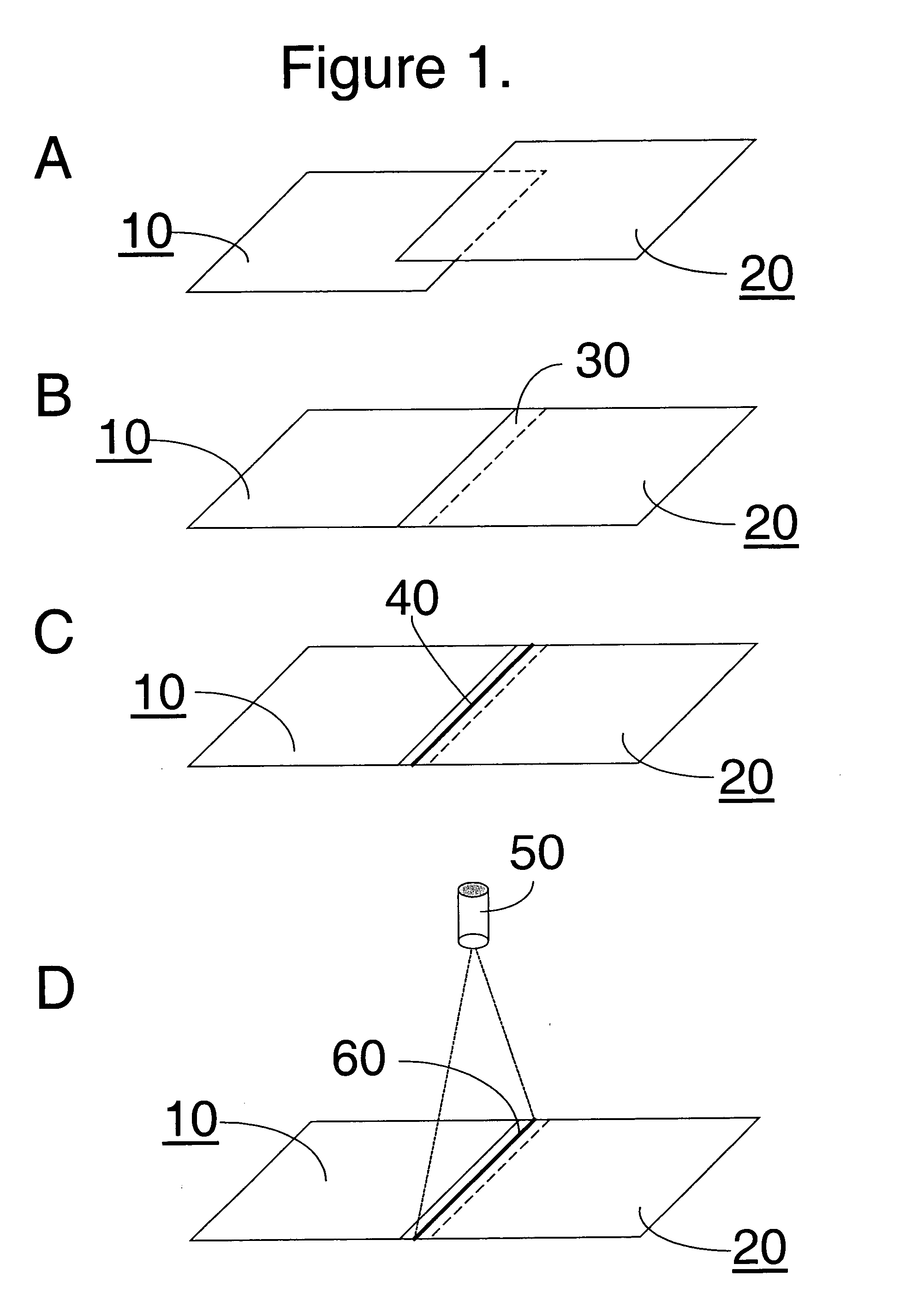Fabric seam formation by radiation welding process
- Summary
- Abstract
- Description
- Claims
- Application Information
AI Technical Summary
Benefits of technology
Problems solved by technology
Method used
Image
Examples
invention example
[0035] Part 1. In this example of the invention, the same fabric woven used in the comparative example was used to construct a cushion form with continuous seams using the laser welding process, also included was a tubulation portion through which inflation gas could be introduced. The laser used to weld the seams was a ROFIN-BAASEL one kilowatt diode laser (obtained from ROFIN-BASSEL, 330 Codman Hill Road, Boxborough, Mass., USA 01719) operating in continuous mode at a wavelength of 940 nanometers; the beam width was 10 millimeters. A cyanine dye with a near infrared absorption maximum of about 785 nanometers (nm) was applied in a line over a lapped portion of the two fabric ends. No more than 50 grams of dye per square meter of fabric exposed to the laser was applied. The laser was scanned at 2 to 10 meters per minute and power in the range of 200 to 1000 Watts. This laser welded seam was measured for gas tightness and seam integrity by the test methods.
[0036] In comparison, the ...
PUM
| Property | Measurement | Unit |
|---|---|---|
| Force | aaaaa | aaaaa |
| Force | aaaaa | aaaaa |
| Power | aaaaa | aaaaa |
Abstract
Description
Claims
Application Information
 Login to View More
Login to View More - R&D
- Intellectual Property
- Life Sciences
- Materials
- Tech Scout
- Unparalleled Data Quality
- Higher Quality Content
- 60% Fewer Hallucinations
Browse by: Latest US Patents, China's latest patents, Technical Efficacy Thesaurus, Application Domain, Technology Topic, Popular Technical Reports.
© 2025 PatSnap. All rights reserved.Legal|Privacy policy|Modern Slavery Act Transparency Statement|Sitemap|About US| Contact US: help@patsnap.com


